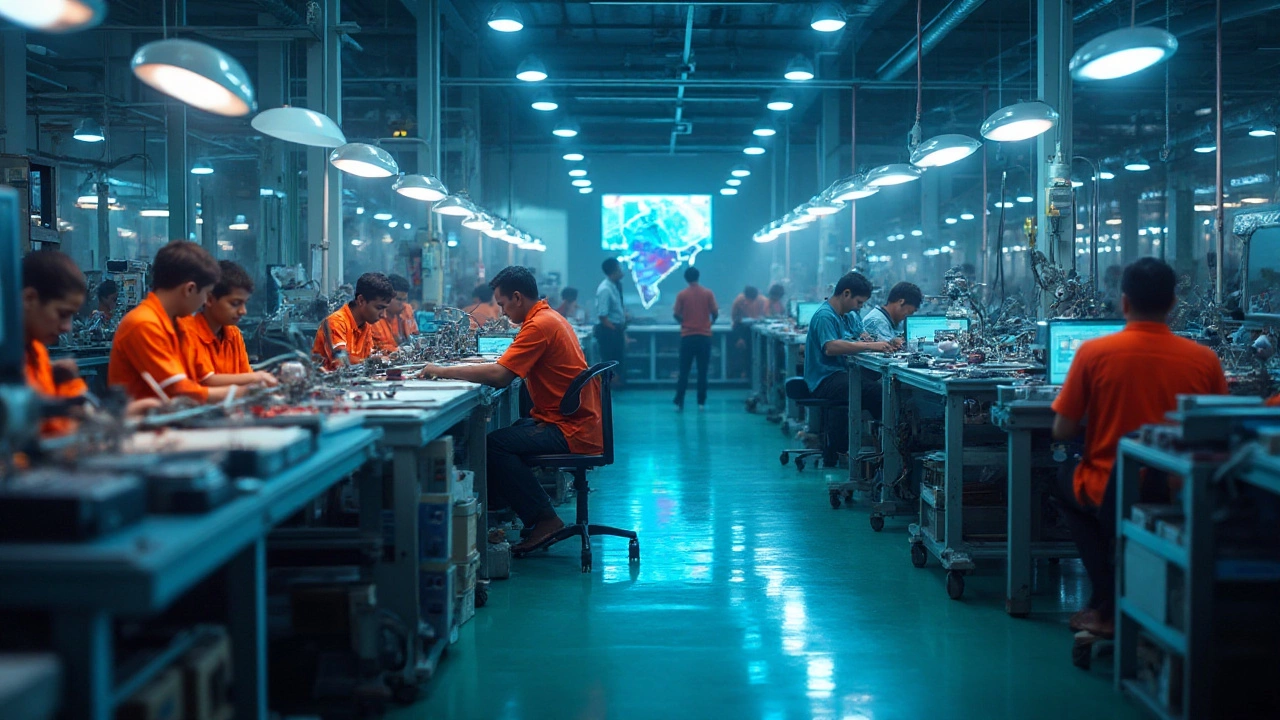- Cost Analysis for Setting Up a Small Textile Manufacturing Unit in India Dec 11, 2024
- Start Manufacturing Your Idea: Step‑by‑Step Guide Oct 8, 2025
- Who Is the World’s Manufacturing Capital? A 2025 Deep Dive Oct 22, 2025
- Who Dominates the Electronics Manufacturing Industry Today? Jan 13, 2025
- The Impact of Manufacturing on Local Economies and Societal Welfare Jan 21, 2025
Global Market Overview: What’s Shaping the World’s Trade Today?
When you hear "global market" you probably picture charts, big numbers, and endless newsfeeds. In reality, it’s a mix of everyday decisions – from where a car gets built to which food ends up on your plate. Knowing the big forces behind these moves helps you spot opportunities before they become headlines.
India, the US, Europe, and emerging hubs like Southeast Asia are all juggling cost, technology, and consumer demand. The result? Shifts in where factories sit, which products get exported, and how supply chains adapt. If you’re a manufacturer, investor, or just curious about where the next growth wave will hit, you’ll want to understand three things: the drivers behind the market, the sectors pulling the most weight, and the practical steps you can take right now.
Key Drivers of the Global Market
First up, cost pressures. Labor wages, energy prices, and logistics expenses keep changing, and companies chase the cheapest, most reliable options. In India, for example, the recent rise in logistics costs has sparked debates about slowing the factory boom – a topic you’ll see in the post about why manufacturing isn’t growing fast enough.
Second, technology. Automation, AI chips, and advanced robotics are rewriting what “made in” means. Look at the AI chip manufacturing story in India: local firms are stepping into a space once dominated by overseas labs, and that’s opening new export doors.
Third, consumer trends. People care more about sustainability, speed, and price. The global push for zero‑waste practices and cheaper electronics in certain countries shows how demand can reshape production locations.
Lastly, policy and trade agreements. Government incentives like India’s Production‑Linked Incentive (PLI) scheme can accelerate growth, while tariffs or regulatory hurdles can push businesses to relocate.
Top Industries Influencing Global Trade
Automotive remains a heavyweight. Posts about top car brands made in India and the most exported Indian cars reveal how the sector fuels both domestic jobs and overseas sales. If you’re eyeing the auto market, watch for changes in export numbers and emerging models geared for global markets.
Food processing is another big player. From ultra‑processed snack facts to deep dives into dairy and frozen foods, the industry’s global footprint ties directly to supply–chain resilience and consumer health trends.
Steel and heavy machinery still anchor many economies. The stories about Pittsburgh’s steel legacy and India’s biggest heavy machine illustrate how raw material production influences everything from construction to tech manufacturing.
Pharma and chemicals can't be ignored. Updates on the fastest‑growing pharma firms in India or which Indian state leads chemical output give you a snapshot of where low‑cost, high‑quality drug manufacturing is thriving.
Finally, electronics and AI chips are racing ahead. Knowing which countries offer the cheapest electronics or where AI chip fabs are sprouting helps you anticipate price drops or supply bottlenecks.
What can you do with this info? Start by mapping your product or service to one of these high‑impact sectors. If you’re a small manufacturer, consider how policy incentives like the PLI scheme could lower your costs. If you’re an investor, track which regions are cutting logistics expenses or boosting tech adoption. And always keep an eye on consumer sentiment – trends like zero waste or demand for affordable gadgets can shift the market faster than any report.
Bottom line: the global market isn’t a static chart; it’s a living system of costs, tech, policy, and preferences. By understanding the main drivers and the industries that move the needle, you’ll be better equipped to make smart decisions, whether you’re expanding production, sourcing new partners, or simply staying informed about where the world’s trade is headed.
Who Dominates the Electronics Manufacturing Industry Today?
- Aarav Sekhar
- Jan 13, 2025
As the world continues to demand more advanced technology, the electronics manufacturing industry has become a hotbed of global competition. While several countries have staked their claim as leaders in this field, understanding the strengths each brings to the table can provide insight into who truly dominates. This article explores the key players in electronics manufacturing, with a particular focus on India's burgeoning role and how it compares to traditional giants.
Top Countries Leading in Electronics Manufacturing: India and Beyond
- Aarav Sekhar
- Dec 3, 2024
The electronics manufacturing industry is a rapidly evolving landscape with a few key players dominating the global market. This article explores which country leads as the largest producer of electronics and delves into India's emerging role in this sector. As technological advancements continue, India's growth in electronics production is creating a significant impact on the global stage. Discover the factors propelling India forward and how it measures up against established giants like China.

